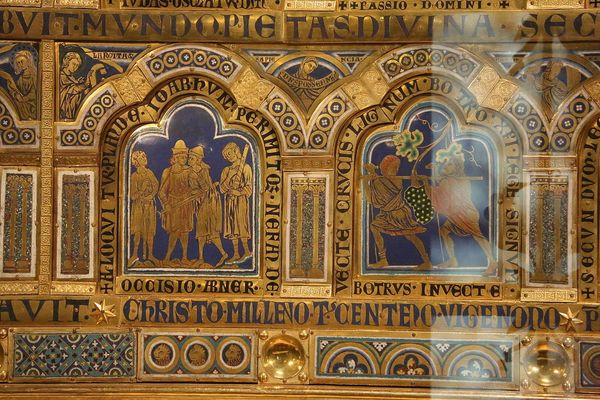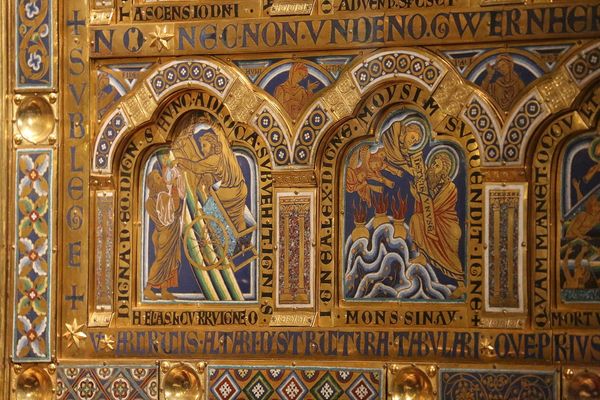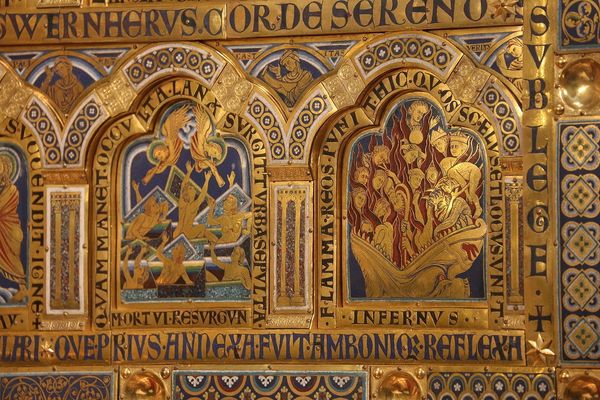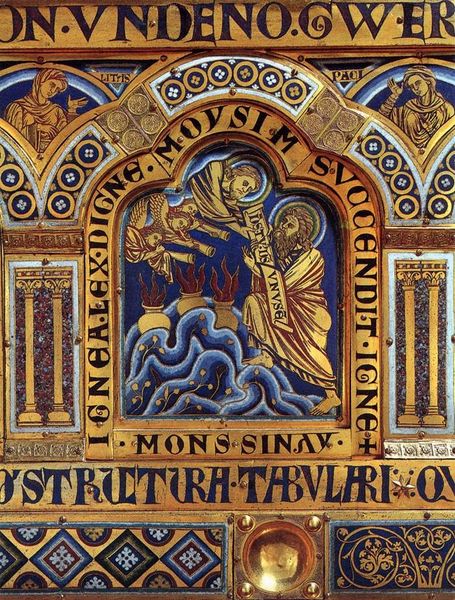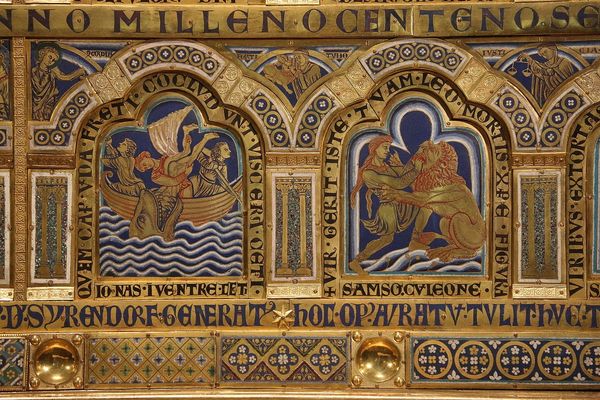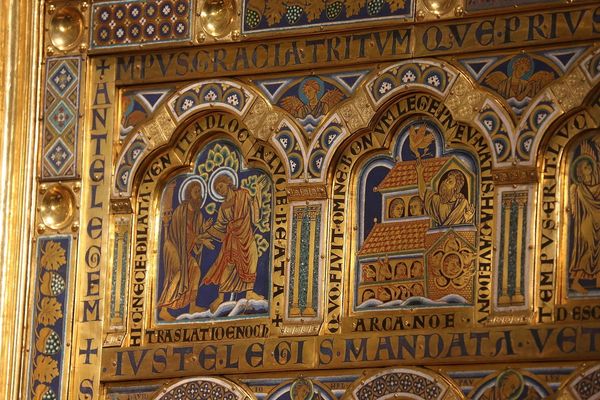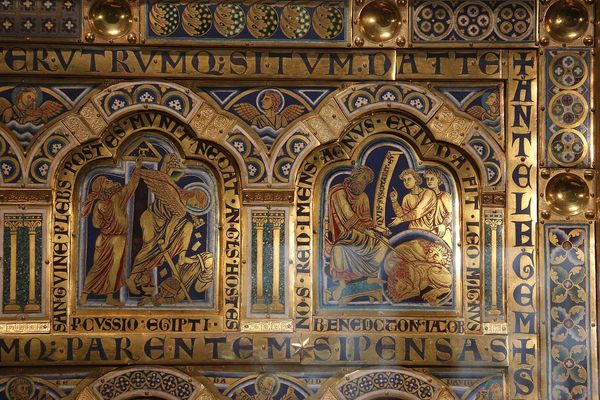
enamel
#
byzantine-art
#
medieval
#
narrative-art
#
sculpture
#
figuration
#
traditional architecture
#
enamel
#
history-painting
Copyright: Public domain
Editor: This vibrant, miniature enamel panel, “The Killing of Abel,” by Nicholas of Verdun, dating back to 1181, feels surprisingly dynamic for a medieval work. I’m immediately struck by the intensity of the scene, amplified by the small scale and rich colors. What do you see in this piece, especially concerning its historical and symbolic context? Curator: Indeed. Its jewel-like quality draws us in, but consider the visual vocabulary at play. We're seeing more than just a biblical narrative. The gold figures against the deep blue create a stark duality, highlighting the primal conflict between good and evil, Cain and Abel. Note how Cain's action lacks any emotional weight—it's rendered as a function rather than a personal decision. Think about the symbolic weight of fratricide; what collective anxieties about societal breakdown might it be tapping into for a 12th-century audience? Editor: So the stylized presentation and vivid colours aren't just decorative; they're reinforcing the weight of this foundational story, emphasizing not only the act, but also its profound implications. The figures seem intentionally depersonalized, like symbols in a larger allegory? Curator: Precisely! They are enacting roles within a cosmic drama. And the luxurious materials used – the gold and enamel – elevate the story, lending it an aura of divine importance. This panel served a didactic purpose; it would teach, warn, and remind the faithful of their moral obligations. Consider the deliberate pairing of luxury with brutality. How does this visual tension contribute to the artwork’s overall meaning and purpose? Editor: It’s fascinating to see how seemingly simple visual choices, like colour and material, become so potent in conveying complex ideas. I'm struck by how powerfully visual symbolism can communicate a story’s emotional core, spanning centuries and cultural shifts. Curator: Absolutely. And understanding those symbols opens a window into the minds and beliefs of people long gone, echoing through cultural memory.
Comments
No comments
Be the first to comment and join the conversation on the ultimate creative platform.






